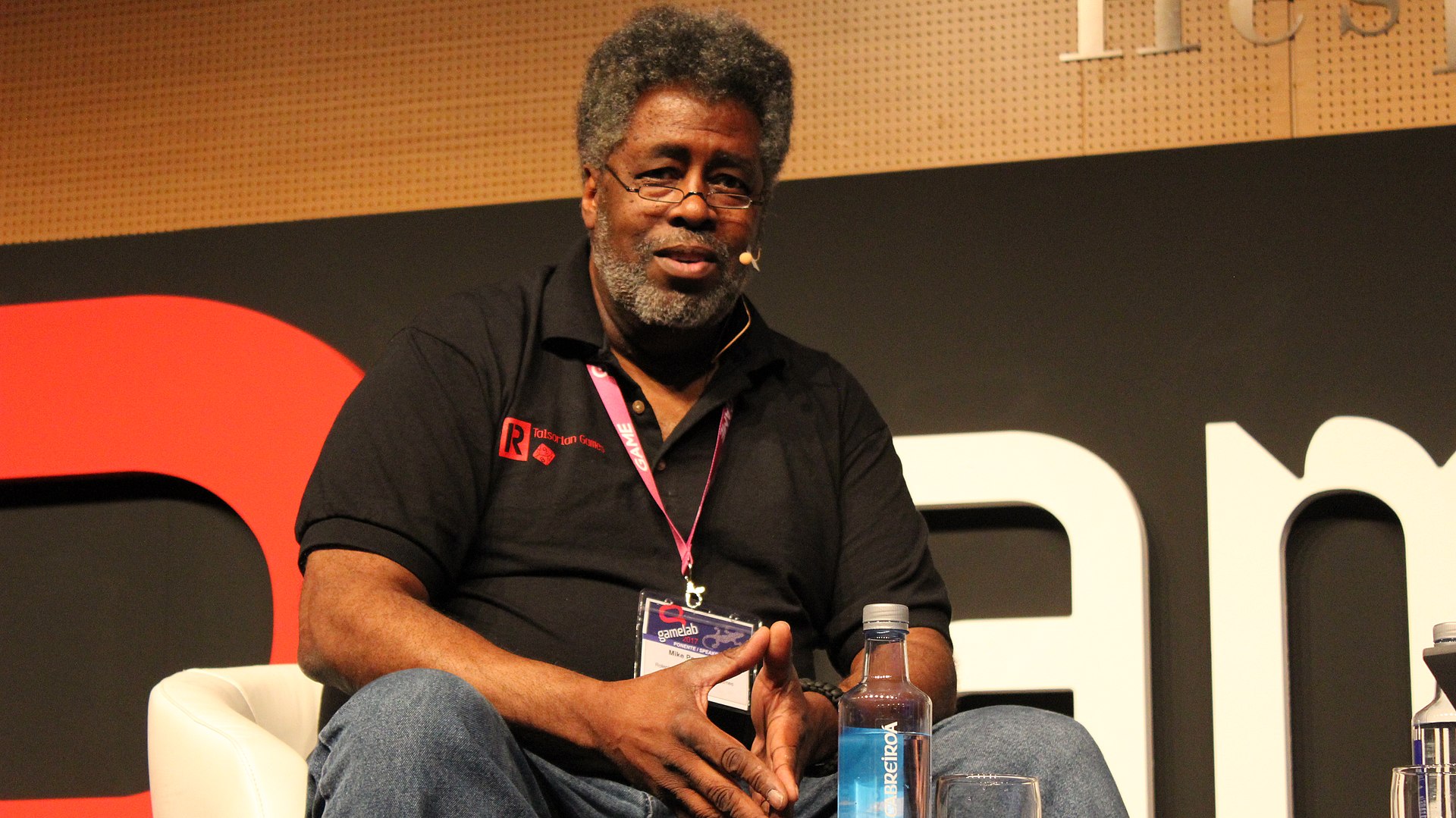Cyberpunk creator Mike Pondsmith talks about the early days of making RPGs
In his PAX keynote, the cyberpunk creator talked D&D, Traveller, and the 'ridiculous' stakes of designing videogames.

As PAX's keynote speaker, Cyberpunk creator Mike Pondsmith took a half-hour this weekend to talk about how he first got interested in games, how he eventually began creating his own RPGs, and some of the differences he sees between designing tabletop games and videogames.
You can watch the keynote embedded at the bottom of this article (and you should—not only is Pondsmith filled with insight and great stories, he's got an extremely enjoyable and soothing voice).
Pondsmith begins by talking about his early days of playing fantasy RPGs like Chainmail and Dungeons & Dragons. In fact, Pondsmith met his future wife, Lisa, during a D&D campaign DM'd by her boyfriend at the time, who kept trying to kill off Pondsmith's character. (Lisa would later create Cyberpunk's clown gang The Bozos.)
Pondsmith then began playing sci-fi RPG Traveller, which inspired him to start tinkering with the "house rules" and begin designing his own games. "I began to think differently about games," he said. "I began to look at how they go together, why are they fun, what are the elements of entertainment, what are the elements of storytelling, what are the elements of building a world?"
He also speaks fondly about the people he met in the early days of his career (including the creator of Traveller Marc Miller, and Car Wars creator Steve Jackson), and how helpful they were. "Game designers are friendly," Pondsmith said. "People have asked me, did you have problems getting into this business? No, really not, people were really friendly when I started out."
Pondsmith said he tries to be friendly to aspiring game designers too, "because I feel like I have to pass it on for all the people in the industry who were willing to put up with me asking dumb questions and give me really good advice."
While tabletop and videogame design have lots in common, one major difference Pondsmith sees are the stakes involved. Pondsmith says even today he could create and print a tabletop RPG for around $10,000, but video game production can easily run into the tens of millions.
Keep up to date with the most important stories and the best deals, as picked by the PC Gamer team.
"When I did my first really large videogame project," he said, "I went in and I said 'What are we budgeted for?' And they said twenty million dollars. And I went... 'I am now responsible for figuring out what to do with twenty million dollars. Oh, crud.' So, the stakes are higher."
With so much money on the line, Pondsmith says budding videogame designers will probably meet fewer helpful people than they'd meet in the tabletop industry.
"I think that's partially because videogames are a little more like Hollywood. The stakes are ridiculous, and there's a lot more of a problem with reaching and talking to fans directly. There's a wall there between you and the people who use your game."
Still, Pondsmith says, "Even in videogames you're going to meet people, just a fewer number of them, who are willing to talk to you about this mystical thing we call game design."

Chris started playing PC games in the 1980s, started writing about them in the early 2000s, and (finally) started getting paid to write about them in the late 2000s. Following a few years as a regular freelancer, PC Gamer hired him in 2014, probably so he'd stop emailing them asking for more work. Chris has a love-hate relationship with survival games and an unhealthy fascination with the inner lives of NPCs. He's also a fan of offbeat simulation games, mods, and ignoring storylines in RPGs so he can make up his own.

